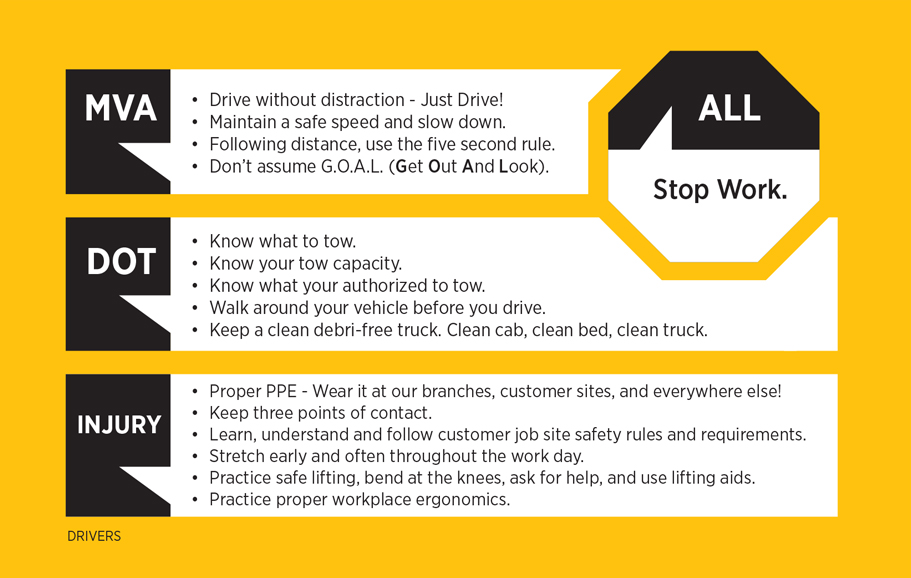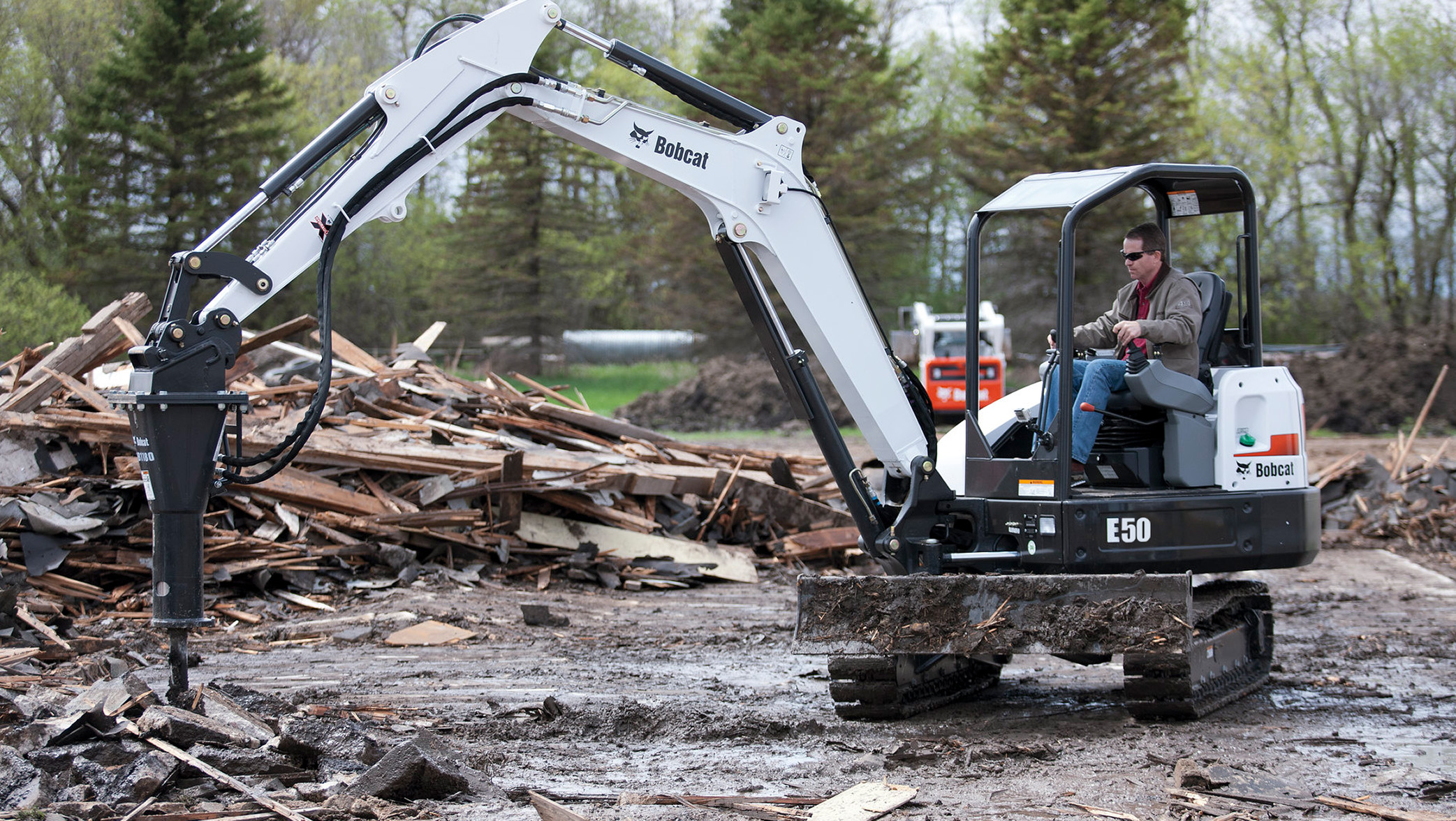National Safety Month is the Ideal Time to Review the Vital Importance of Driving Safely
While truck transport remains the most popular way to transport goods across North America with an estimated 70% of all products reaching their destination via some type of truck, there has also been a 50% increase in crashes involving trucks over the past decade, according to the Federal Motor Carrier Safety Administration (FMCSA).
Most of these crashes can be prevented. For National Safety Month, Herc Rentals encourages all truck drivers and technicians to follow a series of driver safety precautions to take before you leave the yard, on the road, and more.

But first, a few more facts from the FMCSA to think about:
- 74% of all fatal passenger vehicle cases include a large truck.
- Tire defects account for about 30% (the most common cause) of all truck-related accidents. A Large Truck Crash Causation Study conducted by the FMCSA discovered mechanical defects (with tires, most often), new tour routes, and fatigue are the most common causes of truck crashes. Aggressive driving has also been emphasized as a frequent cause, although it has had a direct effect in no more than 5% of the cases.
- Most of these accidents occur during the day — between noon and 3 p.m.
- 68% of all truck fatalities are passenger vehicle occupants.
Herc Rentals safety guidelines for drivers and technicians can be broken down into three categories – each detailing ways to drive safe while also protecting yourself, other motorists and pedestrians.

Motor Vehicle Administration
- Watch overhead obstructions while moving equipment.
- Don’t assume, G.O.A.L. (Get Out And Look).
- Chock wheels.
- Drive without distraction – Just Drive!
- Maintain a safe speed and slow down. Truck braking capability can be a factor in truck crashes. Loaded tractor-trailers take 20-40 percent farther than cars to stop, and the discrepancy is greater on wet and slippery roads or with poorly maintained brakes.
- Following distance, use the five-second rule.
- Use Bluetooth when in vehicles and the Do Not Disturb While Driving Auto Reply on your phone.
Department of Transportation
- Chock wheels.
- Inspect the truck, walk around it and make necessary repairs before operation.
- Know what to tow.
- Know your tow capacity.
- Know what you’re authorized to tow.
- Secure the load utilizing the Load Transportation Guide.
- Walk around your vehicle before you drive.
- Keep a clean debris-free truck. Clean cab, clean bed, clean truck.

Injury
- Proper PPE – Wear it at our branches, customer sites, and everywhere else required!
- Assess your risks, eliminate your hazards
- Exercise Stop Work – stop, notify, correct, resume.
- Keep three points of contact.
- Learn, understand, and follow customer job site safety rules and requirements.
- Inspect tools before every use.
- Follow Job Safety Analysis for task.
- Stretch early and often throughout the workday. Truck driver fatigue is a known crash risk. Drivers of large trucks are allowed by federal hours-of-service regulations to drive up to 11 hours at a stretch. Surveys indicate that many drivers violate the regulations and work longer than permitted
- Practice safe lifting, bend at the knees, ask for help, and use lifting aids.
- Practice proper workplace ergonomics.
By following these simple guidelines, together, we can make our roads safer for everyone. #JustDrive!


